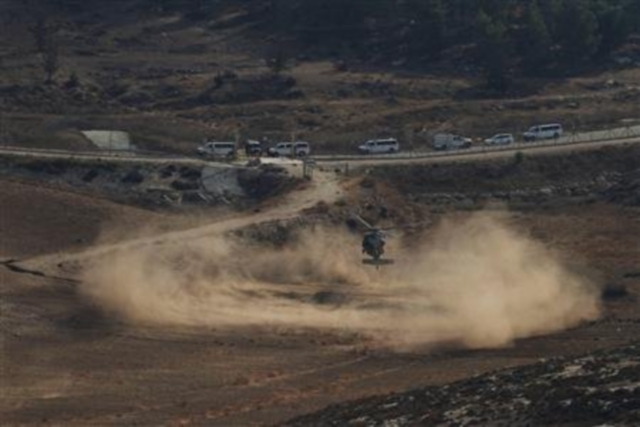An unmanned aircraft shot down by F-16 jets in south Israel was apparently launched from Lebanon by Hezbollah, or perhaps even by the Iranians themselves.
The Israeli Defence Force is looking into the possibility that the aircraft was supposed to photograph the Dimona reactor.
A few hours after two fighter jets shot down a small unmanned aircraft that penetrated Israeli airspace in the south Saturday morning, it is safe to say that an element operating in Lebanon under the auspices of Iran and with its support, apparently Hezbollah, activated the UAS. The aircraft itself, which was downed in the south Mount Hebron area, was apparently made in Iran.
Operating a UAS by remote control from such a long distance requires advanced capabilities, which Israel was not aware Hezbollah had acquired. Hezbollah’s UAS have infiltrated Israeli airspace in the past, from the north, but their activation did not require any navigation system. The unmanned aircraft system (UAS) that infiltrated Israel on Saturday did require such a system. The incident showed that the Israeli Air Force has the ability to detect and intercept UAS at any stage of their flight.
The aircraft was apparently launched by Iran or one of its allies to test the IDF’s detection and interception capabilities, and perhaps even to search for specific targets in south Israel. It apparently began its flight in Lebanon and then headed in the direction of Gaza’s coastline after flying over the Mediterranean Sea. This route was chosen not only because it utilized the depth of the sea’s airspace, but also because Israeli UAS regularly hover above Gaza.
The UAS’ operators may have planned to take advantage of this fact in hopes of confusing Israel’s detection and interception systems. However, the aircraft was detected while it was still flying over the Mediterranean Sea and was downed a half-hour later over the south Mount Hebron area after IAF jets made certain it was not carrying any explosives and that its main mission was intelligence gathering.

An Israeli Army helicopter lands on an open area in southern Israel October 6, 2012. Photo Reuters/Amir Cohen
In other words, Hezbollah tried to conceal the fact that it had sent the UAS by selecting a long route that passed through the Mediterranean Sea. It wanted the aircraft to enter Israel near Gaza, perhaps in an attempt to place the blame on Hamas, which is currently considered hostile to elements that are loyal to Iran.
Hezbollah has launched UAS into Israel a number of times in the past. Before the Second Lebanon War two Iranian-made “Abibal” UAS successfully infiltrated Israel, and during the war itself Hezbollah sent UAS through the sea, perhaps in an attempt to blow them up in Israeli communities. These attempts failed, and in at least one incident a UAS launched by Hezbollah was shot down by an F-16 over the sea.
Iran recently announced that it had developed small unmanned aircraft and cruise missiles with a range of hundreds and maybe even thousands of kilometers. The aircraft that was intercepted earlier in the day may have been one of the new models manufactured by Iran. Syria is also capable of operating UAS from a long distance.
As far as Israel is concerned, Saturday’s incident calls for increased alertness and preparations to thwart such infiltration attempts in the future. If it turns out that the UAS was Iranian and was launched by Iran or Hezbollah, Israel would have to consider its response to such a blatant violation of its airspace. In light of the successful interception and the explosive situation in the Middle East, Israel may decide to act with restraint and not respond at all. It will certainly want to avoid a massive response that may ignite the entire region.
Israel will also examine the possibility that the UAS was supposed to take photographs of areas in south Israel, including photos of the reactor in Dimona.
Photo: A still image taken from Israeli Defence Forces (IDF) video footage shows what they say is a small unidentified aircraft shot down in a mid-air interception after it crossed into southern Israel …
Source: YNet News
